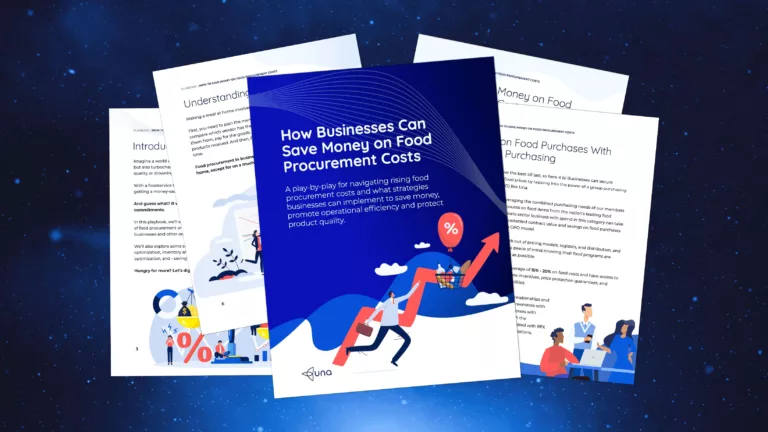
5 Benefits of Outsourcing a Procurement Function
The benefits of outsourcing a procurement function include reduce costs, increased efficiencies, the ability to remain agile, and more.
By Mackenzie Oakley | January 13, 2022
For many companies, purchasing decisions are handled in-house and the job often rests on the shoulders of one person – the procurement manager. This purchasing professional has a tremendous responsibility. They have a heavy hand in determining the length of the expense list for your business each month.
Does your business need new computers or printers? How about network equipment? Maybe it’s new desks, company cars, or simply office supplies. The list could go on and on.
Once they’ve determined what products they need and what their budget allows, it’s up to that individual to negotiate with suppliers or manufacturers. Of course, they can only speak to one supplier or manufacturer at a time, so the process is most likely to be time-consuming.
And if they’re only buying a small quantity of one particular item, chances are they’re probably paying a premium for those products.
Benefits of outsourcing a procurement function
It is entirely acceptable to manage purchasing decisions internally, especially when it comes to your direct spend. But when handling indirect spend or tail spend categories, procurement teams have the option to outsource some of their strategic and tactical procurement functions.
For many businesses, it may actually end up being cheaper and a better use of time to outsource procurement. What’s more, companies that outsource procurement tend to grow faster and become more profitable compared to companies who keep everything in-house.
Here are 5 key benefits of outsourcing a procurement function – and what kind of procurement services can be outsourced.
Companies that outsource certain purchasing functions see operating costs reduced by 15-20%, experience increased efficiency, gain access to additional resources, and are better aligned with business goals and objectives.
Cost savings
Companies that outsource certain purchasing functions can typically expect to see operating costs reduced by 15 to 20 percent, thanks to the process improvements and efficiencies that purchasing companies can offer.
Procurement outsourcing providers have category experts with sourcing experience that may reach beyond what your own organization has access to. Granting dedicated focus to these categories results in more spend under management and greater cost savings.
To determine whether or not you’d benefit from outsourcing, first look at what’s driving the internal costs of your business. Many companies decide to outsource procurement without assessing the current state of their purchasing. If you aren’t familiar with your current purchasing costs, there’s no way to know whether you’ll actually benefit from outsourcing.
Get an idea of spending by category. Within each category, note the types of spend, such as catalog and on-site. Then, look at the volume of these transactions and how often you’re purchasing each item. You’ll need this information to determine whether you might be able to get a better price on your purchases or purchase a better product for a similar price.
Improved focus and efficiencies
By outsourcing certain procurement activities, you’re able to shift the focus of your procurement department. When a third party is handling the supplier search and contract negotiations, the members of your team have a chance to redefine their roles to allow them to focus on other sourcing initiatives or core competencies.
A third-party, such as a group purchasing organization, already has established vendor relationships which means their process can be applied quickly to multiple categories.
Access to procurement resources
Partnering with a third party is essentially opening up the number of procurement resources at your disposal. Outsourcing means you now have access to category experts who can offer advice and a wider supplier portfolio that can help accomplish your goals.
Objectives that are better aligned with the business
When selecting a procurement partner to help with sourcing activities, make sure the capabilities of the procurement company align with your company’s objectives. If you’re looking to reduce costs, the company should have a proven track record of helping similar companies achieve lower supply spend.
Similarly, if streamlined purchasing or better products are your goals, you’ll need to find out whether the procurement company has successfully attained these goals for other companies.
Establishing an agile procurement function
Before outsourcing procurement activities, consider the specific needs, goals, and capabilities of your organization, and examine any potential risks and benefits associated with outsourcing.
Which types of procurement services can be outsourced?
In reality, anything and everything can be outsourced as long as you have someone left in the team to manage your suppliers. There’s no right or wrong way to go about outsourcing procurement, but you can approach it a few different ways.
One organization might choose to outsource all the tactical, low-level tasks and keep strategic procurement in-house. Others may choose to keep direct purchasing in-house while outsourcing indirect spend management. Others may choose not to outsource anything that needs the human or personal touch such as supplier relationship management.
To get started, consider all the tasks carried out by the team in a typical procurement cycle:
- Supplier selection and evaluation: Service providers can identify and assess potential suppliers based on quality, cost, reliability, and other criteria.
- Request for Proposal (RFP) management: Outsource tasks related to creating RFPs and managing the time-consuming RFP process.
- Contract negotiation and management: Third parties can negotiate contract terms and manage ongoing contracts on your behalf.
- Purchase order processing: Outsourced providers can create and manage purchase orders for goods and services.
- Supplier Relationship Management: Outsourced providers can build and maintain relationships with suppliers, monitor performance, and resolve issues on your behalf.
- Strategic sourcing: Consulting firms can help implement strategies to optimize sourcing and procurement activities that align with your goals.
- Market research: Suppliers can analyze market trends, conduct supplier market intelligence, and identify new suppliers.
- Spend analysis: A third party like a group purchasing organization can analyze spend patterns and identify opportunities for cost savings.
- Compliance and risk management: Bring in someone to help ensure compliance with legal, regulatory, and internal policies, and manage supplier risks.
- Inventory management: Outsource forecasting and manage inventory levels to meet demand while minimizing costs.
As you can see, various stages or steps of the procurement cycle can be outsourced to a third party service provider, consultant, or group purchasing organization to drive cost savings, improve procurement efficiencies, and better align your procurement function with overall business goals.
In the end, outsourcing procurement opens up more ways for sourcing teams to adapt to change quickly while ensuring business continuity and increasing profitability.
Una is a group purchasing organization dedicated to helping businesses of all shapes and sizes save money, time and effort. Contact us to learn how partnering with a GPO to handle certain procurement functions can take your sourcing strategy to the next level.









